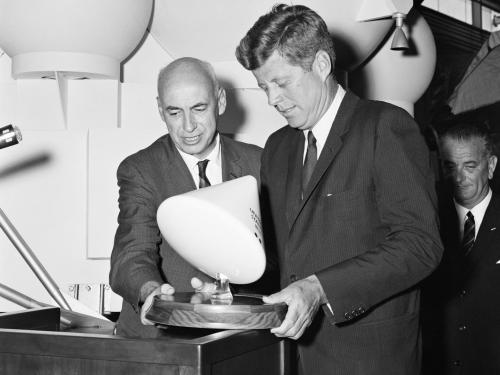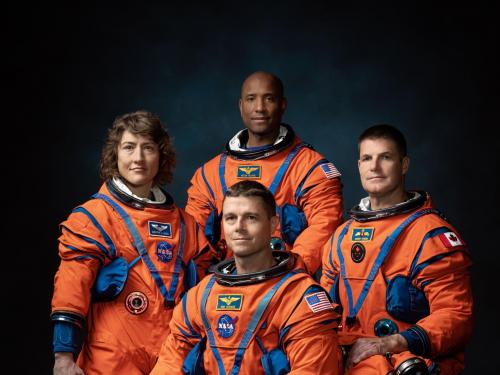
Stories of daring, stories of technological feats, stories of prevailing against the odds ... these are the stories we tell at the National Air and Space Museum. Dive in to the stories below to discover, learn, and be inspired.
Showing 11 - 20 of 91

November 13, 2023
Frank Borman was one of the great explorers of the 20th century. As commander of Apollo 8, he was one of the first three humans to leave low Earth orbit, travel into deep space, and orbit the Moon. Yet exploring space was not his dream. An Air Force officer, patriot, and ardent Cold Warrior, he wanted to beat the Soviet Union in the Moon race and played a central role in making that happen.

September 20, 2023
These companies are taking a faster, cheaper approach to landing on the moon

August 23, 2023
In 1961, President John Kennedy called on the nation to send a man to the Moon. In 1969, the United States did just that. Today, many are familiar with the story of Neil Armstrong’s first few steps on the Moon (cue the “That’s one small step...” quote), but have you ever questioned why we invested so much time, effort, and national attention in getting there?

June 21, 2023
It’s been nearly 50 years (!) since humans last walked on the Moon. But NASA’s upcoming Artemis missions will soon return astronauts to the lunar surface.

April 24, 2023
The recent announcement of the crew for NASA’s upcoming Artemis II mission in Houston, Texas, featured a major role for Canada. Introduced with NASA astronauts Reid Wiseman, Victor Glover, and Christina Koch was Canadian Space Agency (CSA) astronaut Jeremy Hansen. The four astronauts are scheduled to test the Orion spacecraft in high Earth orbit, then make a loop around the Moon—becoming the first human beings to venture into deep space since the Apollo 17 astronauts in December 1972. It is an honor to be selected for this crew, so why would a United States agency give up one of the seats to a Canadian?

April 03, 2023
The Artemis II mission will return humans to the vicinity of the Moon for the first time in over 50 years. And those Moon-faring humans are commander Reid Wiseman, pilot Victor Glover, mission specialist Christina Koch, and mission specialist Jeremy Hansen.

March 13, 2023
A study of Chesley Bonestell's mural "A Lunar Landscape."

January 05, 2023
Walter Cunningham passed away on January 3, 2023. As a member of Apollo 7, Cunningham took on the risk of flying the first crewed flight of the Apollo program, which paved the way for future Apollo missions, including the first lunar landing in 1969.

December 16, 2022
When the Apollo 17 astronauts splashed down in the Pacific Ocean 50 years ago, they were the last humans to visit the Moon. NASA’s Artemis program is set to return humans to the Moon, but not for two to three years from now. Why has it taken more than five decades to send humans back to the Moon?

December 12, 2022
When the crew of Apollo 17, the last Apollo Moon landing, returned to Earth after their record-breaking mission in December 1972, commander Gene Cernan brought back the pair of lunar overshoes he walked on the surface of the Moon with. The boots that left the last human footprints on the lunar surface now live in the Destination Moon exhibition at the Museum.
